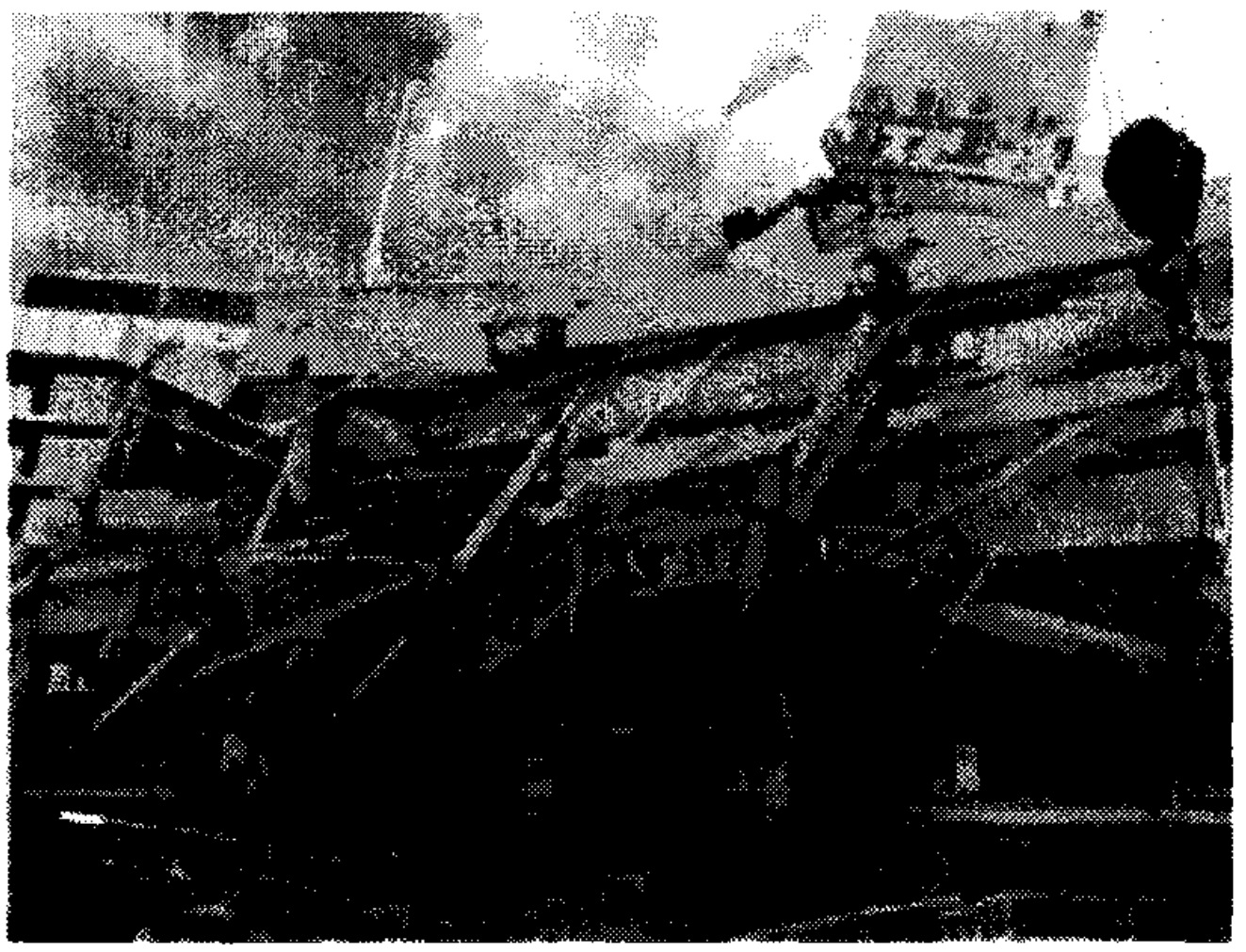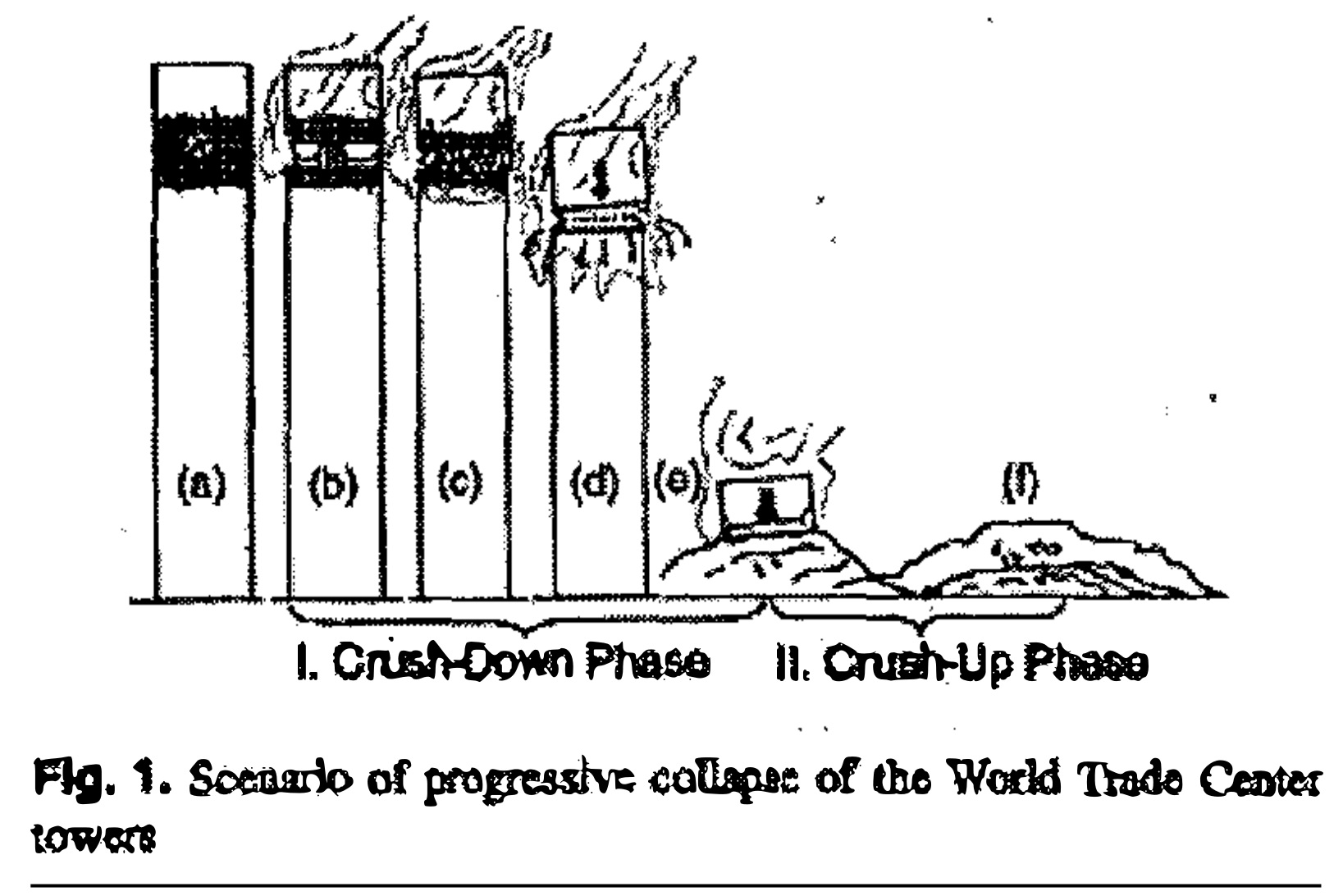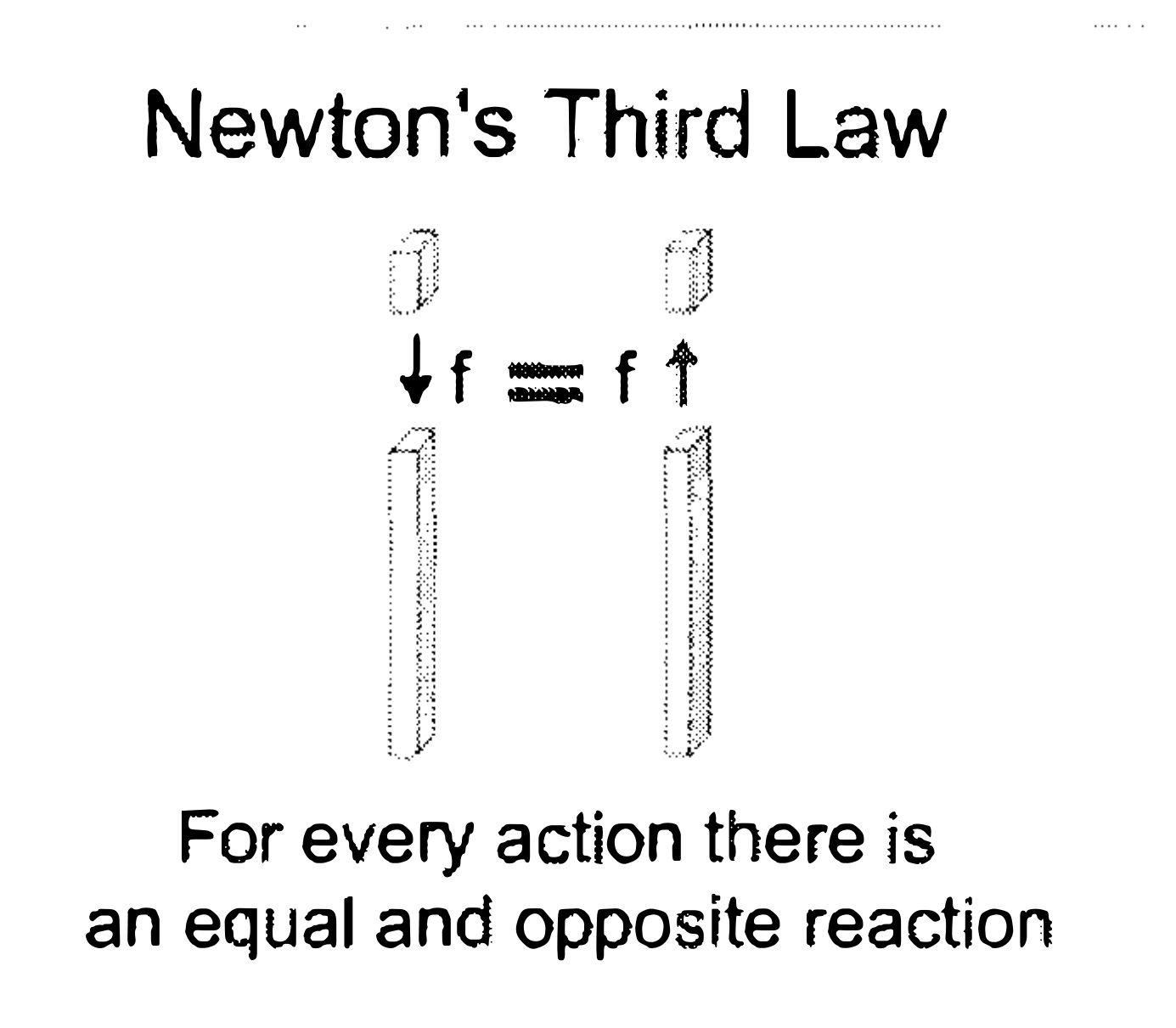How did the Twin Towers fall down?
The answer to the question of how the Twin Towers fell down depends on when the question was asked. On the day of the event, recall what the news said live, as we watched those terrible events unfold:
“ . . . huge explosion that we all heard . . .” — LIVE FOX News Alert
“ . . .and another explosion . . .” — CNN
“We presume because of the initial explosion that there may have been secondary explosions as well that were detonated in the building by these terrorists.” — NBC4, Tom Brokaw
“The entire building has just collapsed as if a demolition team set off; when you see the old demolitions of the old buildings; it pulled it down on itself and it is not there anymore.” — ABC News
“Um . . . if you wish to bring . . . anybody who has ever watched a building being demolished on purpose knows that if you’re going to do this you have to get at the . . .at the under infrastructure of a building and bring it down.” — ABC Live Coverage, Peter Jennings
“ . . . an enormous explosion now in the remaining World Trade . . .” — CNBC, Mark Haines
“It happened the same way, the explosion started high in the building and worked its way down. There, you see the building imploding. It… it…do you see what’s happening? I think we’re safe, I think I’m on safe ground Bill, I don’t think… this was clearly…the…the way the structure is collapsing…this was the result of something that was planned. This is…it’s not accidental, that the first tower just happened to collapse and then the second tower just happened to collapse in exactly the same way.” — CNBC, Mark Haines
Well over a hundred eyewitnesses heard explosions at the World Trade Center — not the explosions due to the impact of the planes, but additional, secondary explosions. So on the very day of the event, had you had asked “Why did those towers fall?” the answer was clear that day: the towers were brought down with explosives.
The Floor by Floor “Pancake” Collapse
Several of our institutions and media experts later presented the “floor by floor” progressive “Pancake Collapse” Theory. PBS, with its popular NOVA program Why the Towers Fell, explained:
The heat of the fire would have softened both the floor trusses and the outer columns they were attached to. When the steel became weak the trusses would have collapsed. And without the trusses to keep them rigidly in place, the columns would have bent outward and then failed. Once the trusses failed, the floors they were holding cascade down with a force too great to be withstood. The result is what’s called a progressive collapse, as each floor pancakes down onto the one below.
NOVA did not show the actual video of the towers’ destruction. Rather, they used an animation of the floors without the towers’ perimeter columns so that it appeared as if the floors were floating in space around the central core columns. Yet even with their simulation, the central core columns remained standing after the floors pancaked. How those core columns ultimately fell remained unexplained by NOVA.
The phenomena we observed when the towers fell did not match the animations presented to the public by NOVA. For example, entire floor systems did not collapse straight down on the one below. Rather, we observed only portions of the floors being demolished, racing well ahead of the balance of the floors. In addition, we observed much of each tower’s mass being blown outward and away from the lower floors, so much of upper mass could not possibly have impacted the underlying floors.
The strong inner core columns of the Twin Towers were cross-braced and could stand on their own. Videos show much of the core standing well after the majority of the floors were demolished, and then eventually they too fell straight down. This straight down fall of the “spire,” or inner core columns, remained unexplained with the “Pancake Collapse” Theory.
And when we observe other building collapses that have indeed “pancaked,” for example from earthquakes, we clearly see stacks of floors in the rubble.
 New Zealand earthquake collapse clearly indicating pancaked floors
New Zealand earthquake collapse clearly indicating pancaked floors
Yet, there were no stacks of floors observed at Ground Zero. This Pancake Theory still persists today even though the NIST, after years of study and millions of dollars, concluded: “NIST findings do not support the ‘Pancake’ Theory of collapse which is premised on a progressive failure on the floor systems in the WTC Towers.JJJ”310
The “Pile Driver” Collapse
Others besides NIST also disagreed with the Pancake Theory. Some claimed it was a “Pile Driver” collapse.
Professor Zdenek Bazant and others published a series of scientific papers replete with equations purporting to describe how the upper top “block” of floors crushed the lower, larger section down to the ground, and then, that upper block crushed itself back up.
 Like the Pancake Theory, this Pile Driver Theory neglected to explain how that upper block fell through those inner core columns, or why the “spire” of core columns remained standing for a few seconds and then fell straight down.
Like the Pancake Theory, this Pile Driver Theory neglected to explain how that upper block fell through those inner core columns, or why the “spire” of core columns remained standing for a few seconds and then fell straight down.
In addition, no one observed or recorded this upper block crushing all the way to the ground or the remarkable crush-up phase. Again, much of the falling debris was blown well outside the underlying tower so that material could not have possibly impacted the lower undamaged structure.
The Pile Driver Theory’s crush-down crush-up scenario ignores Newton’s Third Law, which holds that for every action there is an opposite and equal reaction. How, then, can a smaller top block, acting by gravity alone, crush a larger stronger lower block without also destroying itself well before it could destroy the entire lower larger block?
 The core of the Scientific Method is to test the hypothesis by experiment for confirmation. The critical “experiment” step in the scientific method demonstrates what actually happens in the real world, because experimental results are governed only by the laws of physics. The best hypothesis is the hypothesis that addresses the most evidence, and can be confirmed by a repeatable experiment. Richard Feynman, the Nobel Prize-winning physicist, understood that many beautiful theories regardless of their elegance or complexity are invalid if not proved by real world experiments.
The core of the Scientific Method is to test the hypothesis by experiment for confirmation. The critical “experiment” step in the scientific method demonstrates what actually happens in the real world, because experimental results are governed only by the laws of physics. The best hypothesis is the hypothesis that addresses the most evidence, and can be confirmed by a repeatable experiment. Richard Feynman, the Nobel Prize-winning physicist, understood that many beautiful theories regardless of their elegance or complexity are invalid if not proved by real world experiments.
To test this Pile Driver Theory, I conducted several rudimentary experiments that attempted to demonstrate the principal of this crush-down crush-up hypothesis. The experiments were not an attempt to recreate the towers’ collapses. Instead, they were intended to test how similar materials would behave when they impact under the force of gravity alone.
The experiment was relatively simple. I would drop one concrete block onto a stack of several concrete blocks. Not one repetition of this experiment resulted in the block that was dropped destroying the entire stack of blocks. Instead, the falling block damaged the top block and damaged itself, directly in line with what one would expect from Newton’s Third Law. Therefore, my experiment failed to support the Pile Driver Theory of falling objects. And so far, no other real world experiment, regardless of its sophistication, has been able to demonstrate this remarkable crush-down crush-up aspect of the Pile Driver Theory.
Since the Pile Driver hypothesis concept has yet to be verified by any real world experiment, and just the opposite has been demonstrated…it’s wrong.
The Mysterious ‘Eutectic Steel’
Jonathan Barnett, a fire professor from Worchester Polytechnic Institute, was surprised to find some unique pieces of steel at Ground Zero that had intergranular melting. The New York Times said it was “…perhaps the deepest mystery uncovered in the investigation.” Since office and jet fuel fires cannot melt steel, what heat caused these pieces of steel to melt?
Other professors at WPI did an analysis on this steel and found that it had been attacked by a eutectic mixture that included sulfur. The FEMA Report, which included those professors’ findings in its Appendix C, said: “No clear explanation for the source of the sulfur has been identified.” So the critical question was: Where did that sulfur come from?
The voluminous official NIST study, taking years to complete, never answered that question. Institutional experts from other universities did attempt to answer it. Dr. Frank Greening published a research paper, which concluded “that sulfur emissions…were relatively small compared to those involving diesel fuel…and CaSO4 in gypsum wallboard…” The BBC corporate media experts agreed saying: “The sulfur came from masses of gypsum wallboard that was pulverized and burned in the fires.”
However, gypsum wallboard is commonly used to protect steel from fire, not attack it. Despite this incongruence, the gypsum explanation for the creation of sulfur stuck, even though no experiments were ever conducted to verify such bold conclusions.
Realizing that an experiment could be conducted relatively simply, I decided to undertake this task. Using a structural steel beam, I surrounded it with crushed concrete, gypsum wallboard, diesel fuel, plastics and aluminum to simulate the materials available in the WTC fires. I then placed it in a fire and fed that fire with ample fuel, driving the temperatures high enough to make the steel beam glow red and melt aluminum. The fire burned for over 24 hours, and later the steel was exposed. Despite the long duration of exposure to high temperatures, no intergranular melting was observed at all. Rather, the steel was still very sound and serviceable.
After I posted a video showing my experiments and its results, titled 9/11 Experiments: The Mysterious Eutectic Steel to YouTube, Dr. Greening admitted: “I am prepared to admit that my initial proposal of how the steel was sulfided during the 9/11 events needs to be modified. Certainly it looks like diesel fuel, gypsum, concrete and aluminum alone are not going to do it.”
Yet even after this experiment and admission by Dr. Greening, there are still some who ignore the scientific method and still claim today that only typical office materials burning caused the steel to melt. Dave Thomas, in the July/August 2011 issue of the Skeptical Enquirer magazine, stated: “This occurred because sulfur released from burned drywall corroded the steel as it stewed in the pile for weeks.”
To date, no experiment with diesel fuel and wallboard can replicate this intergranular melting, and that awkward question for the official story still remains unanswered today: Where did the sulfur come from?
Can Thermitic Material Melt Steel?
In an effort to explain what was never explained by NIST or FEMA, namely the sulfur source which caused the intergranular melting, the flowing metal observed pouring from the South Tower minutes before its demise, and that high percentage of iron-rich microspheres found by the USGS in the dust, independent scientists have pointed out that all of this evidence could easily be explained as a result of a thermitic reaction.
Thermite is a specific mixture of iron oxide and powdered aluminum, and thermate includes just the right percentages of thermite, mixed with sulfur and other chemicals. It is the added sulfur that helps form a eutectic that lowers the melting point of steel. Thermite has been used for welding railroad tracks and destroying military arms for years. Moreover, the natural byproducts of a thermitic reaction include iron microspheres.
The suggestion of some type of thermitic material being used in part to destroy the twin towers did not fit well with the official explanation, so it was ignored in the NIST and FEMA/ASCE reports. To counter this suggestion, the scientific arm of the corporate media conglomerates attempted to discredit the thermite reasoning by conducting their own experiments, which were intended to downplay thermite’s capability to melt or cut steel.
The National Geographic Channel, using New Mexico Tech University experts, provided experimental “proof” that thermitic material could not have been used to demolish the Twin Towers because large quantities of thermite cannot cut or even melt a steel column. National Geographic and its experts premised their experiment by stating “If thermite melts through [a] steel column, the theory of a thermite controlled demolition may have some validity.” They then posed a simple question to the viewer: “Can thermite of any type burn through steel beams?” By inference, if the thermite won’t melt the steel column in their experiment, the viewer can assume that the theory of thermite controlled demolition has no validity.
Their experiment used 175 pounds of thermite powder surrounding a steel column, held in place by steel plates shaped like a funnel against the column. Although the thermite reacted with an eruption of smoke, intense bright light and tremendous heat, the column remained virtually undamaged after the experiment. Accordingly, an average viewer could now conclude that thermite must not have been used, since the National Geographic experiment, conducted by trusted experts, “proved” that thermite could not even damage the tiny steel column used in their experiment. It could then be assumed that thermite could not harm the massive box columns that supported the towers.
Although the experimental television show Mythbusters refuses to discuss the events of 9/11 on its website, they reinforced this notion that it would take massive amounts of thermite to do any real damage. They ignited 1000 pounds of thermite in an attempt to cut a car in half. But even with all that thermite, it barely managed to melt through the car’s thin metal roof.
In addition, websites referenced by many supporting the official 9/11 story have said: “The thermite would have also needed to cut sideways. Not an easy feat for thermite. You see, it’s a powder, which burns chaotically. Maybe with some device but no working device has been proven to me to work to cut a vertical column.”
The results of the National Geographic and Mythbusters experiments, along with the official story-supporting websites, leave the public believing that:
Thermite cannot melt steel.
Thermite cannot cut a column, horizontally or vertically.
It would take a large amount of thermitic material to do any real damage to a steel beam.
I decided to conduct my own experiments to see if the above conclusions were correct.
The Great Thermate Debate
In one of my experiments, I made small amounts of thermite, which were held loosely in place with clay tiles on each side of a welded steel connection. When I ignited the thermate, it yielded similar results to the National Geographic experiment; that is, there was virtually no damage to the steel.
Indeed, it appears powdered thermate/thermite placed loosely against steel, where the vast majority of the energy is dissipated away from the steel column, does little or no structural damage. But what if that energy was somehow more focused? I decided to fabricate a crude thermite torch that would direct the energy released by the thermite reaction in a specific direction.
Using short segments of steel box tube, I had a slot milled along one corner of the steel box. I then welded on a bottom plate and small angle clips on each side near the top of the box segment. I placed less than 2 pounds of powdered thermate in a plastic bag, and placed the bag inside the small box segment. Finally, I attached the top plate, held by angle clips.
This assembly was then clamped to a steel column and ignited with a magnesium strip. This time, it sliced right through the web of a wide flange. After examining the debris from the experiment, it appeared to me that the second half of the thermate inside the slotted steel tube was less constrained, and therefore did not cut as well as the first half. So, I built a variable container intended to keep the volume constant during the reaction, using a sliding steel piston kept under relatively constant pressure. Bolting this mechanism to a vertical steel column also resulted in a damaged column, but this time cut horizontally.
I made several variations of thermate containers that, when ignited, could slice off large diameter bolts from either side. In addition, my thermitic “box cutters” were configured such that they could be placed inside replicas of the towers’ perimeter box columns and cause significant damage. Moreover, igniting thermite held in simple iron pipes mounted adjacent to a wide flange resulted in the flange being melted away and thinned to razor sharpness, similar to that “eutectic steel” piece found by Jonathan Barnett.
Full details of my experiments can be seen on a YouTube video called 9/11 Experiments: The Great Thermate Debate.311 My experiments were not intended to suggest that crude containers holding ordinary thermite were somehow bolted to the tower walls. Rather, my point was to demonstrate that the corporate media’s experiment intended to “prove” to the public that large amounts of thermite could not do any damage was wrong. As demonstrated, the results of my experiments proved that small amounts of thermate indeed can do serious damage to steel. Thus, the theory that thermitic materials could certainly have been used in the towers demolition has not been disproved by the experiments shown in National Geographic and Mythbusters.
In 2009, a peer-reviewed scientific study was published describing a very high-tech energetic material found in the WTC dust called nanothermite, further supporting the independent theory that the towers’ demise was intentional and due, at least in part, to thermitic material. If ordinary experiments with “old fashioned” thermate could damage steel, modern high-technology and energetic nanothermate should produce far better destructive results.
Yet, any suggestion of thermitic material being used in the towers’ demolition is still being dismissed with statements like those of Dave Thomas in Skeptical Enquirer magazine: “Thermite is simply not practical for carrying out a controlled demolition, and there is no documentation of it ever having been used for this purpose.”
First, the independent scientists suggesting that thermitic materials were used in the towers and WTC 7’s demolition are not saying that only thermitic material was used. Rather, it may have been, and probably was, used in conjunction with other explosives. Secondly, prior use of a product, especially an innovative product, is not necessarily a prerequisite for proving that something cannot be done. Finally, even in the case of ordinary thermite, the statements are not true.
In 1935, a three million-pound steel tower, which was taller than World Trade Center 7, was taken down with 1500 pounds of thermite placed on the outside of the steel support columns.312

Why couldn’t thermite also work to help destroy the World Trade Center buildings, perhaps if it was placed inside the steel box columns that supported them?
Over the years we have been given many conflicting and inaccurate theories by the media and institutional experts, including:
- The office fires melted the steel. The office fires didn’t melt the steel.
- The truss connections broke first. The truss connections didn’t break.
- The columns bowed outward. The columns bowed inward.
- It was a progressive pancake collapse. It wasn’t a progressive pancake collapse.
- It was a pile driver collapse — although no experiment can support this claim.
- Collapse was inevitable — even though collapse is not inevitable.
- Sulfur came from the drywall — Sulfur did not come from the drywalls.
- The experts could not melt steel with thermite — but a novice could.
And remarkably, there is absolutely no official theory given by the government or any of their agencies for the total collapse of the Twin Towers. Today, we really only have the official “Collapse Initiation Theory” asserted by NIST. Those theories, regardless of how official they may be, were never confirmed by experimentation and therefore prove nothing.
Tell them to prove it!
No matter what theory you are told and regardless of who is talking, tell them to prove it by experiment using the scientific method. Regardless of how beautiful or logical it is, or how it fits with your perception of world events, if that theory doesn’t agree with experiment…it’s wrong.
Not one fire-only collapse theory put forth to date can be supported by the experimental method. The crush-down crush-up pile driver theory is wrong because it defies Newton’s third law, doesn’t match observation and has not been supported by any known experiment. The “pancake” theory is wrong because it defies momentum laws, cannot explain the fall of the core, doesn’t match observation, and cannot be replicated experimentally.
Here is some of the evidence that must be explained:
- The measured uniform downward acceleration of the tower roofline, with no “jolts” observed to amplify the downward force.
- The explosive ejections of building material seen well ahead and before any possible impact from the primary destructive wave front.
- The straight down collapse of the inner core columns, or “spire,” well after the rest of the towers demise.
- The initial “antenna drop” observed on tower one.
- The lack of “pancaked” floors at Ground Zero.
- The acknowledged free-fall of WTC 7 for over 100 feet — a total impossibility with any type of progressive collapse not assisted by explosive demolition.
- The energy to create all the dust and powdered concrete.
- The cut up steel segments found at Ground Zero.
- The sulfur and resulting eutectic formations found in the steel.
- The iron microspheres.
- The molten iron or steel observed, and
- The nanothermite found in the dust.
The only theory that adequately addresses this evidence is the intentional “controlled demolition” hypothesis, using some combination of incendiaries and explosives. And the use of explosives is exactly what was clearly understood by those who were there on the very day of the event, before the experts had time to tell us what to think:
“…the way the structure is collapsing…this was the result of something that was planned …it’s not accidental, that the first tower just happened to collapse and then the second tower just happened to collapse in exactly the same way. How they accomplished this, we don’t know but clearly this is what they wanted to accomplish.” — CNBC, Mark Haines
Over the last ten years, there never really was a single “official collapse narrative” of how those towers came down on 9/11. Rather, there was a bewildering array of theories that contradicted each other and themselves, and did not address significant evidence. The main common element among all of the official accounts is that they deny that explosives were used — the only hypothesis that best addresses all the evidence and can be supported by experiment, using the scientific method.
The twin towers didn’t just naturally “fall down” from airplane impact damage, fires and gravity alone. They were intentionally blown up.
Endnotes
- Questions and Answers about the NIST WTC Towers Investigation, response to question 8, 4th paragraph. Available at http://www.nist.gov/el/disasterstudies/wtc/faqs_wtctowers.cfm
- http://www.youtube.com/watch?v=5d5iIoCiI8g
- “Skyride Tower Felled by Melting Steel Legs,” Popular Mechanics. Nov. 1935. p. 657.



